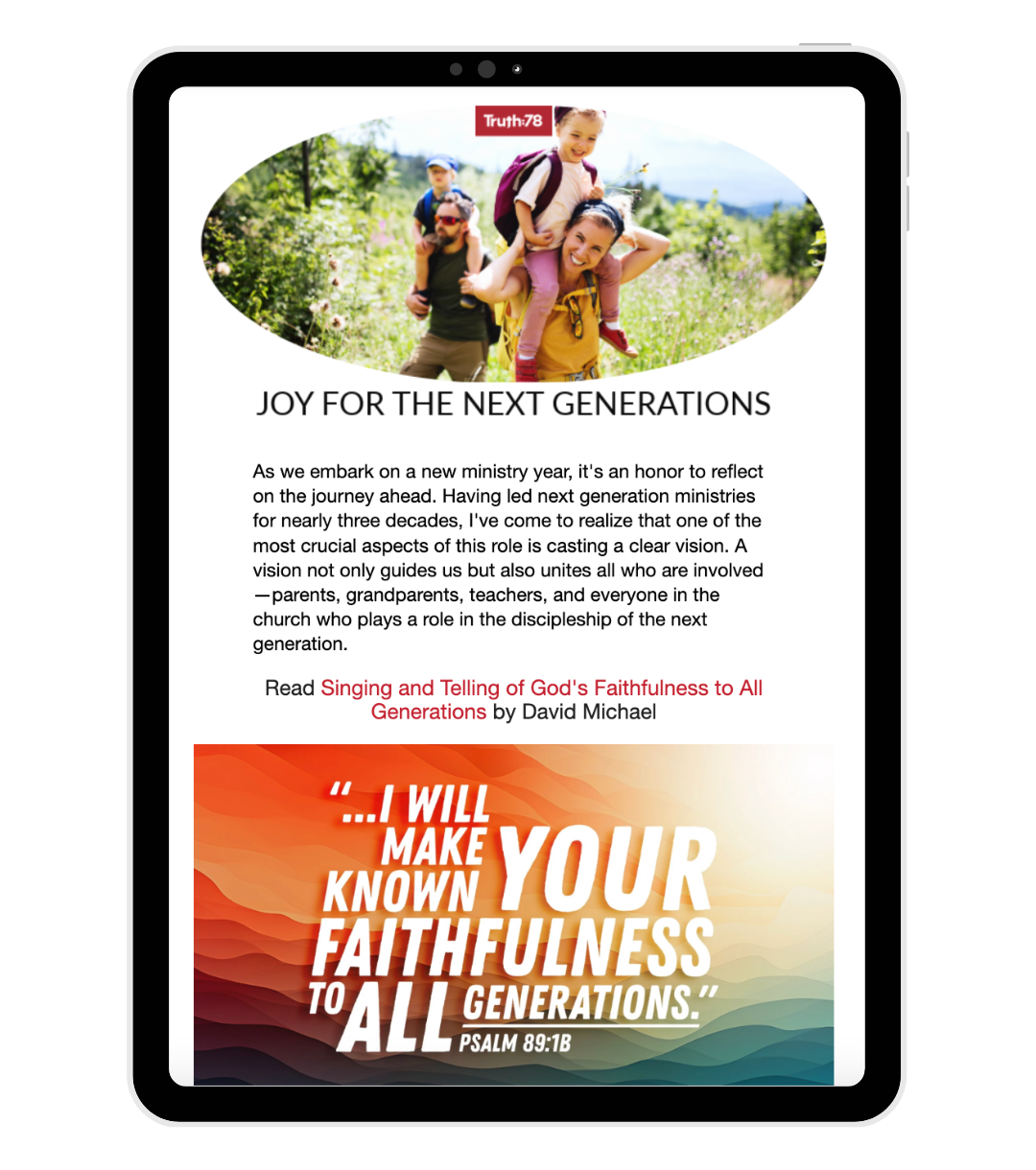Teachers, what do you want to see happen in your classroom this year? What are your aspirations and goals for your students? Toward that end, what must you commit yourself to doing?
This past year, after several years of teaching on Wednesday nights, my wife and I taught Sunday school for the first time—teaching through the To Be Like Jesus curriculum.
Based on our experiences in our first year of teaching Sunday school, we are resolved to pray more earnestly in lesson preparation, emphasize Bible study, and give more time to small group application.
Teaching To Be Like Jesus was a significant learning experience for us, and on the Sunday afternoon after we finished teaching the last lesson in the curriculum, we reflected on the past year. We were encouraged as we thought about the ways the children in our class grew, especially in their engagement with, understanding of, and application of God’s Word.
We were thankful for the fruit we saw from applying Truth78 training for making the most of the resources and classroom time available. We saw fruit specifically from:
- Using Visuals and the Materials Encouraged for Illustrations—Though it would have made preparation easier at times to take shortcuts on the visuals and illustrations, we saw the difference it made to consistently incorporate these elements as we watched the children discover key truths through example images and tangible experiences.
- Being Intentional with Welcome Time—Early on, we often scrambled in the time before class started. As children came in, we would still be reviewing the lesson or preparing visuals and were very hit and miss in engaging the children. After reading “Making the Most of Your Transition Time,” we saw how valuable that time was. We found greeting the children with an icebreaker question helped us to get to know them better, and it often provided further preparation for the lesson’s opening illustration.
- Sending GIFT Pages—We also made the effort to send out the GIFT (Growing in Faith Together) Pages with each lesson so that parents could know about and follow up on the lesson at home. Though we often didn’t hear back from parents, we were encouraged by several who let us know over the course of the year how they appreciated the regular engagement.
As I mentioned earlier, there were also three areas where the fruit we saw has motivated us to grow more in our second year. As we go into a new year, we are resolved to:
Pray More Earnestly in Preparation
Over the past year, we grew to love how much the introductions in the curriculum prepared us for each lesson, especially in preparing our hearts. Praying the suggested prayer from the introduction reminded us of our dependence on the Holy Spirit to open children’s eyes to see. We were also encouraged to see how praying over the lesson and the students grew our affection for them and our desire to see them know and treasure Christ. We are committed in the year ahead to do this more earnestly, specifically by praying big, bold, biblical prayers for the children in our class.
Emphasize Bible Study
Early on, we came to see that the curriculum gives the Bible center stage—by maximizing biblical instruction and repeatedly guiding students to Scriptures to read, observe, interact with, and memorize. Even though most of the Scriptures we discussed in class were in the curriculum, we recognized the importance of finding and reading them directly from the Bible. And even though we had a wide range of reading abilities in our third- and fourth-grade class, we came to see the value of giving as many students as possible the opportunity to read Scriptures in class—not just the ones who tended to be first in Sword Drills. This also helped us see how critical it was for children to bring their Bibles, and for parents to support this central focus of the teaching by encouraging their children in Bible study.
Going into the new year, we are motivated to do even more to keep Bible study central. One addition we plan to make is adding a books of the Bible line as a way to help the children in our class grow in searching for, and finding, Scripture verses in their own Bibles.
Give More Time to Small Group Application
Finally, our experience teaching Sunday school the past year showed us the value of small group application. When we started teaching, we initially saw the application elements at the end of the lesson as bonus learning, which we ended up presenting similar to the lesson.
Reading the training document on Leading Small Group Application, we realized how much we were missing. Instead of just trying to use that time for further learning, we recognized the significance of the opportunity to engage students' hearts and influence their will in calling for a response to God’s Word.
As we divided the class into smaller groups and led them in focused discussion, we saw a deeper level of engagement as they worked through assignments in their workbooks, as they responded to questions designed to help discern what they heard in the lesson, and then as they saw how it applied to their own hearts and actions. We were encouraged to hear later from several parents whose children appreciated that change in the Sunday school hour.
We’re committed in the year ahead to work harder at managing the clock to leave sufficient time for all that small group contributes to helping children to become hearers as well as doers of the Word.
Whether you’re teaching your first year of Sunday school or your 21st year, may you make the most of the opportunity you have for teaching the gospel that’s been entrusted to you—praying earnestly for the Lord’s work in each student through each lesson, emphasizing Bible study, and stewarding the time you have for teaching as well as knowing and engaging your children’s hearts.







